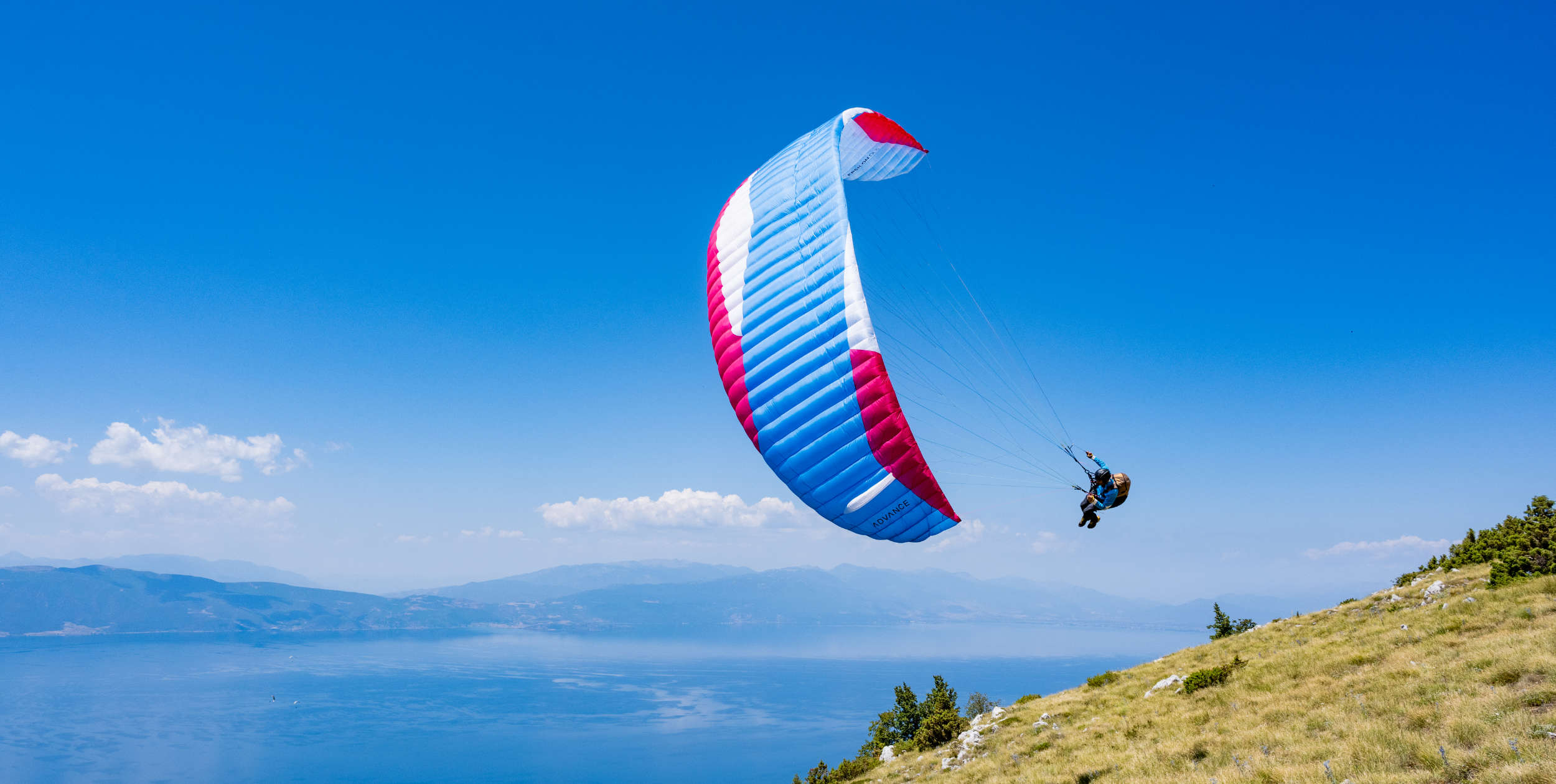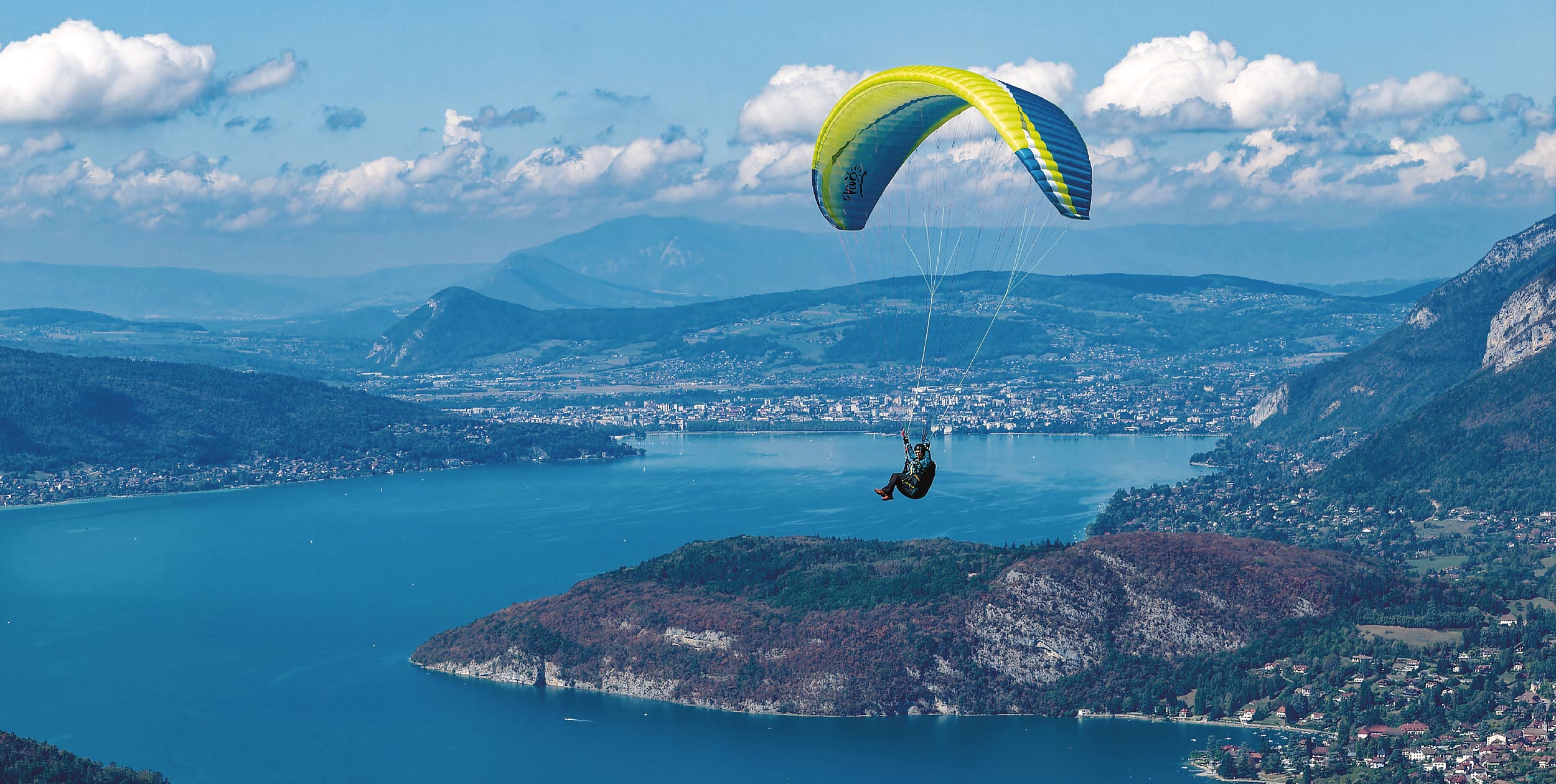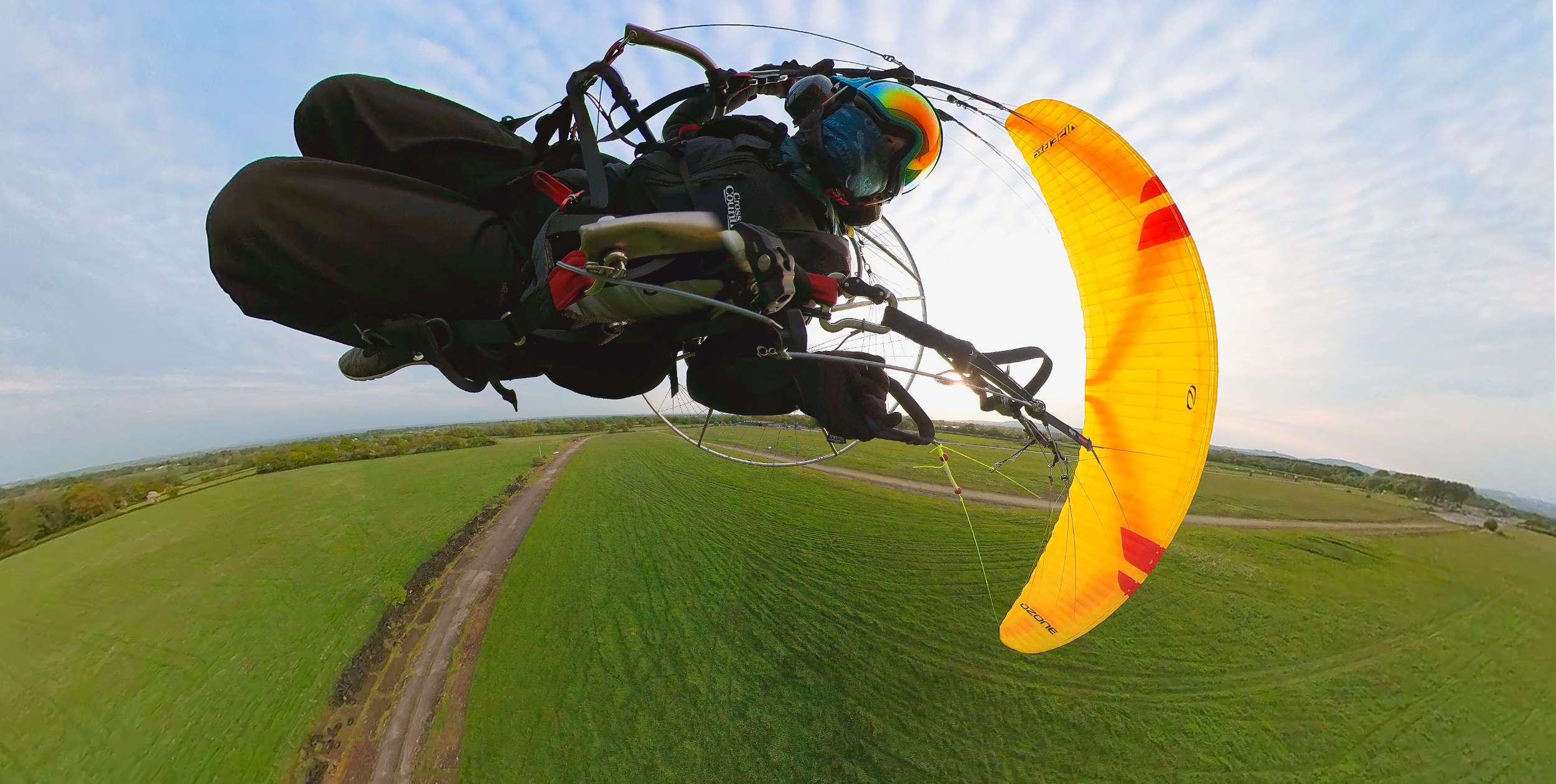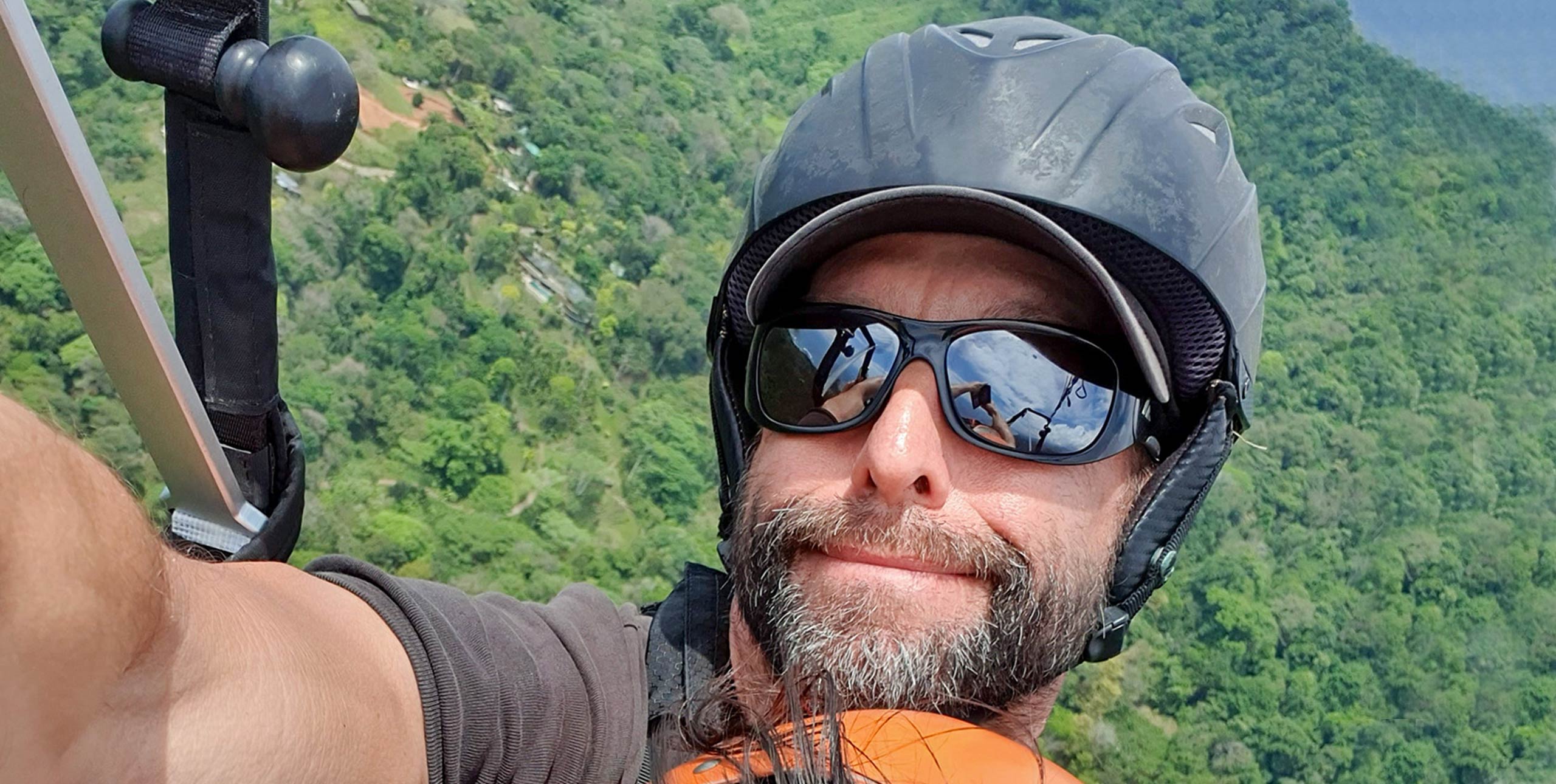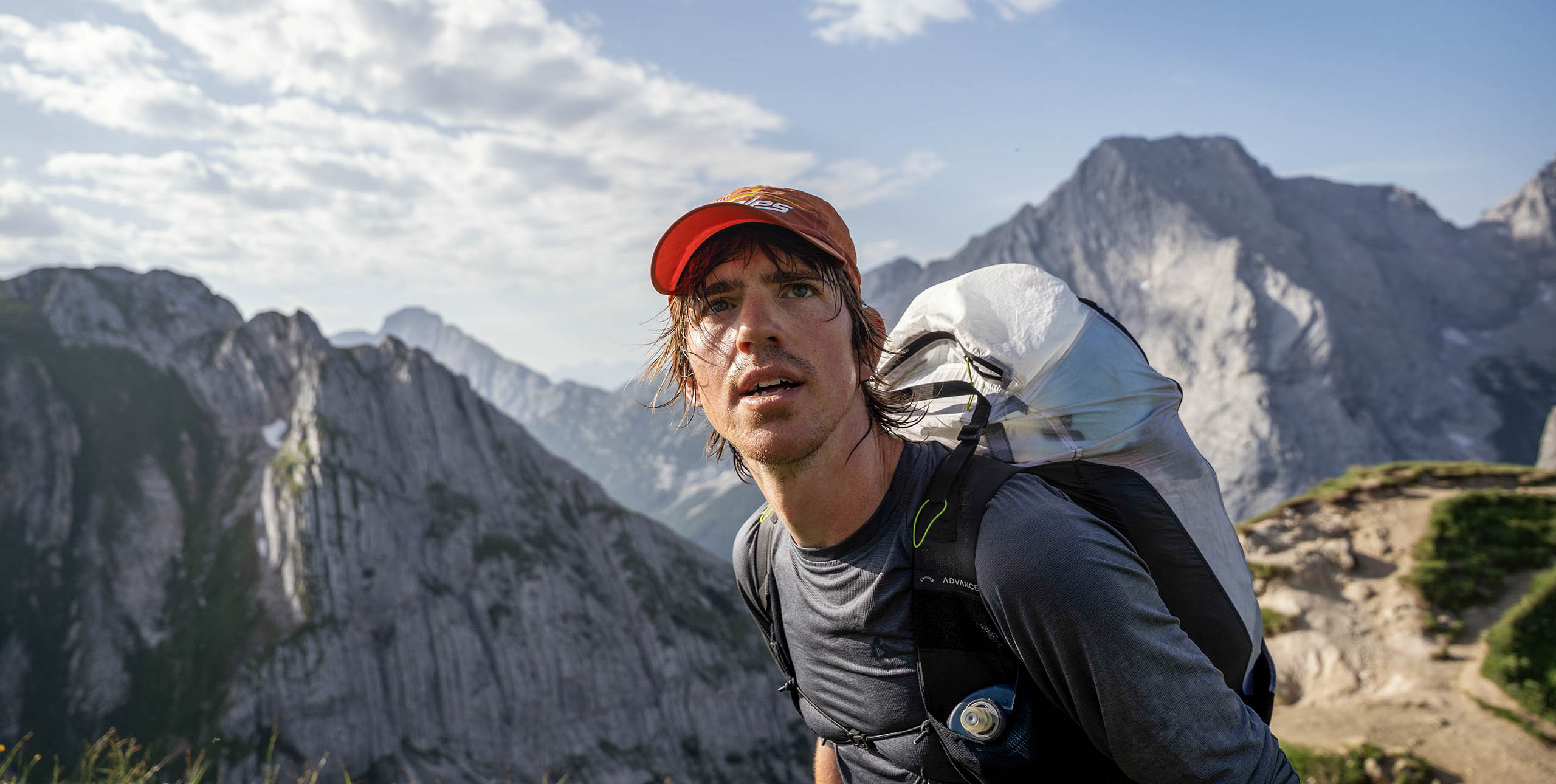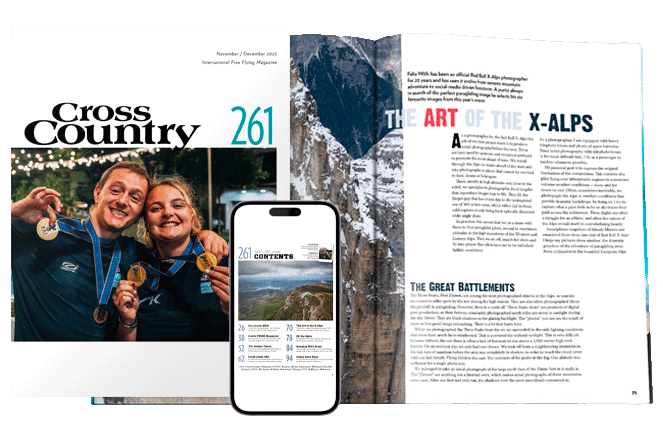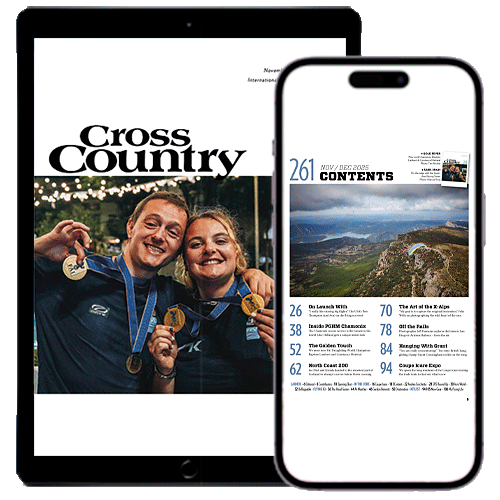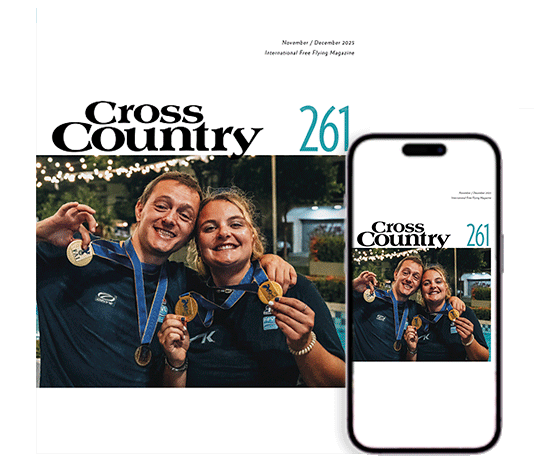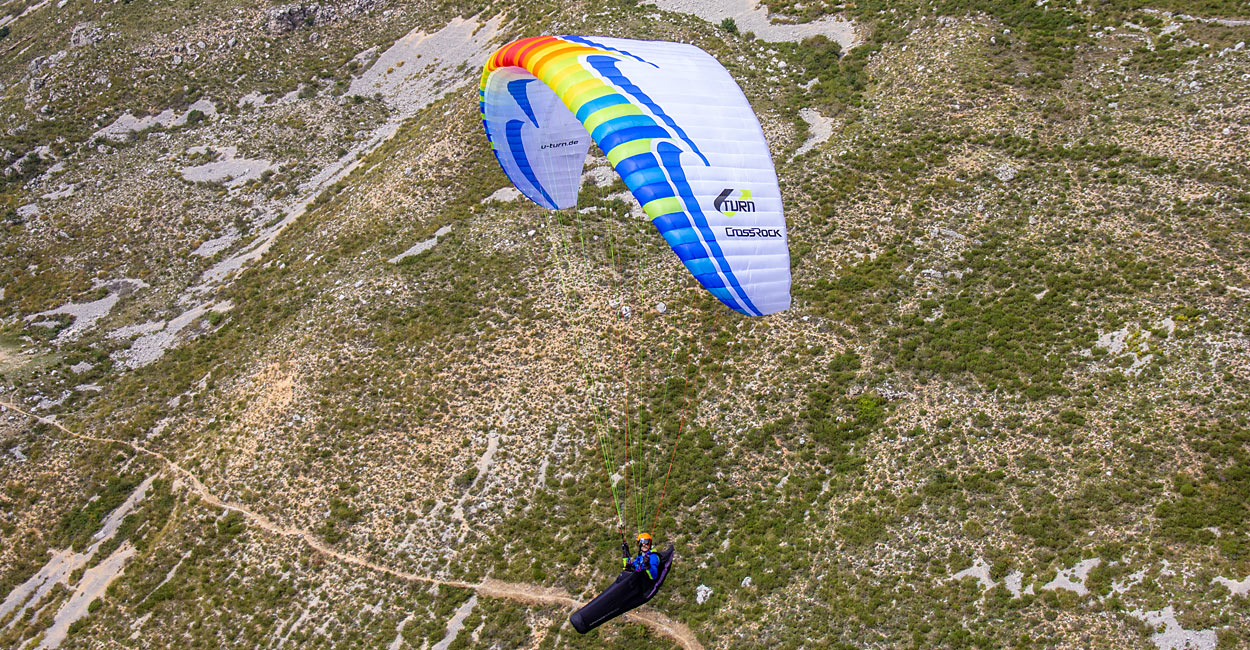
Marcus King packs his bag and tries this new lightweight EN-B travel wing
For me U-Turn have always been a company synonymous with acro. They weren’t a brand that I would have thought to look at for a cross-country wing. But their designer Ernst Strobl has been in the paragliding industry for many years and they have a full range of wings.
I did fly a Blacklight when that came out a few years ago, but didn’t particularly get on with it, although others loved it. With the Blacklight 2 the company obviously rethought the wing, stepping back into mid-B territory with a reduction in aspect ratio and thicker lines. The Crossrock is the lightweight version of that wing and is billed as a “lightweight travel-wing suitable for every day.”
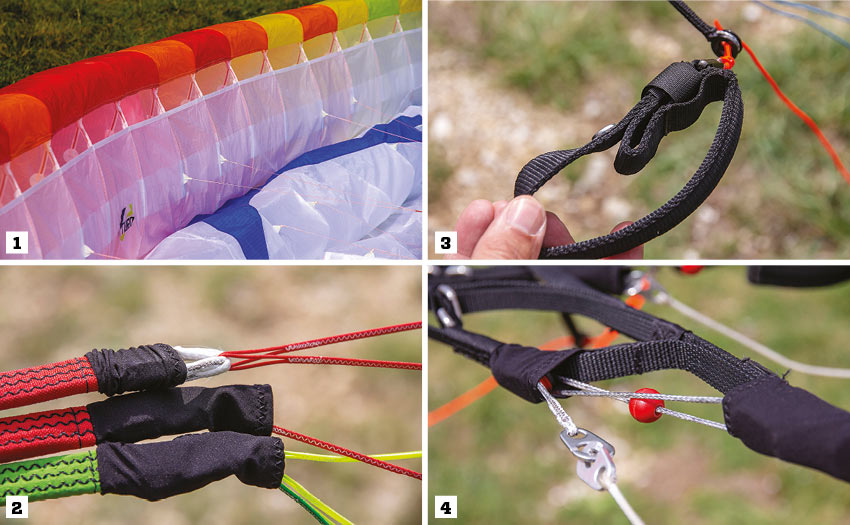
1 Plastic wires in the leading edge
2 Softlinks are covered with neoprene sleeves
3 Brake line runs through a ceramic ring rather than a pulley
4 A ball on the speed system increases the ratio over the second half of travel, making it easier to apply
Construction
The wing is packed with lightweight features. It’s made from Skytex 32 and 27 cloth, and the mix of fabric has created a wing that is light and compact. The test 27.2 size wing I flew weighs in at 4.6kg, making it marginally heavier than a similar-sized Ozone Swift. (My digital scales actually showed it at 4.55kg, including the stuff sack.)
There are plastic wires in the leading edge, and small plastic wires in an arc around the C-tabs to spread the load. They are quite small, making packing relatively easy – great for a travel wing.
Only the lines next to the wing are unsheathed. The rest are thin but sheathed, which is good for longevity. They attach to the risers with softlinks covered with neoprene sleeves. Some may prefer maillons which are easier if you want to change lines, but these links are stronger, lighter and can’t be left undone.
The risers are well constructed from webbing rather than Dyneema. The brake handles aren’t padded but have a stiffener inside, and I actually found them very comfortable in use. They have a small piece of webbing with velcro that can be used to reduce the size and are attached with poppers.
The brake line runs through a ceramic ring rather than a pulley. The speed system has a ball to increase the ratio over the second half of the travel. A nice touch is the colour-coding of the left and right risers. Everything is nicely finished off.
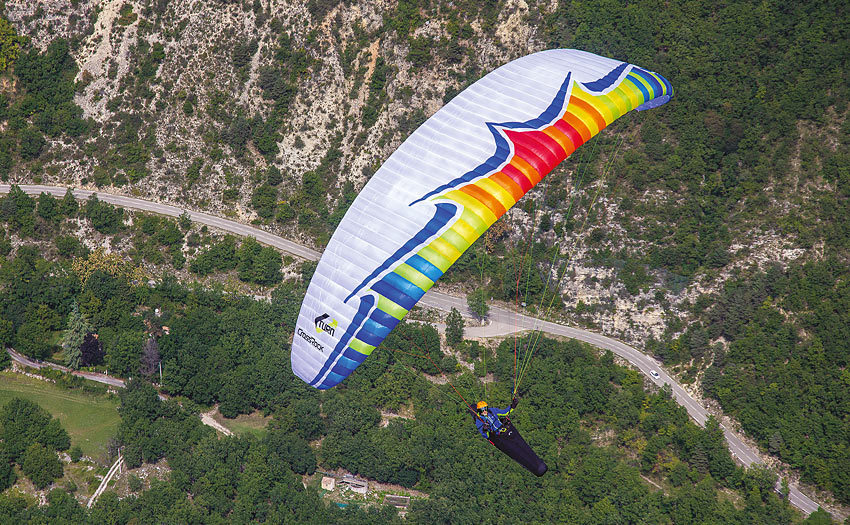
While U-Turn have a strong reputation for acro gliders, they say their main market is EN-A and EN-B wings. The Crossrock is aimed at intermediate pilots and above. It’s well built with an eye on weight-saving detail, making it a good everyday XC wing as well as suitable for travelling
Photos: Charlie King
In the air
Do we really need to talk about launch any more? Most wings these days are super easy to launch. The Crossrock is no exception: it comes up smoothly and easily and there is no tendency to overshoot. It’s all very user friendly.
In the air the glider has a really nice feel to it. It is not a demanding wing to fly at all, in fact I found it very relaxing in the air. The brakes are relatively direct, nicely agile with enough precision so you can put the wing exactly where you want. There is no tendency to dive into the turns.
In fact the Crossrock proved to be a very efficient climber. Anything goes up in strong cores but the wing proved itself in weak and broken thermals. On stable days I was able to make good use of its ability to climb out when others were struggling. Keeping a constant turn in broken thermals it seemed to float up the lifting air without sinking badly between.
The wing feels cohesive with no pitching back or forward. It soaks up turbulence well without getting pushed around. The glider does a good job of sniffing out the lift and you can feel a nice level of information through the brakes, without it being shouty or tiring. It’s a wing you would feel comfortable on in big adventure playgrounds.
Performance is always hard to gauge, but I got the impression it hits higher than its mid-B ease-of-use label would suggest. Gliding wingtip-to-wingtip with some other mid-B wings I found I was faster and had a better glide. I never felt like I was losing out to the mix of wings around me.
On glide the wing feels like it floats up the turbulence, like the best of the high-Bs. Unlike some lightweights it doesn’t feel jittery; instead it deals with the turbulence in a smooth and comfortable way.
Exploring more
On bar it remains solid throughout the speed range. Bar pressure is fairly light for the first half, getting harder in the second half but still fine. I found myself whizzing around at half-bar a lot as that is probably the most efficient and easy to find.
Playing with the wing it has a nice amount of energy without being aggressive. Wingovers and spirals are very easy to control using the brakes and weightshift. There is a good brake range with plenty of warning when you get close to the stall.
Intentionally stalling a wingtip showed an easy recovery with no great sudden pitching. I tried a few 50% collapses: the wing turned towards the collapse but then rolled out in a nice smooth fashion. Playing with opposite brake it was easy to control the heading with no feel that it was on the verge of going negative.
Big ears were easy to induce with the outer A-risers. Once in they don’t flap around, sitting quietly in position. Once released they roll out slowly and progressively on their own, although a pump can speed this up.
The glider’s precise handling makes positioning the wing for top-landing really easy. The flare is super-easy and easy to control.
In a nutshell
I really enjoyed flying the Crossrock. It’s very relaxing to fly and the climbing efficiency flattered my ability. Some wings always demand their pilot’s attention, but the Crossrock allowed me to get on with the flying and seeing the bigger picture.
When things were stable its efficiency helped me climb out; and when the thermals got stronger it stayed calm and allowed me to hook into them. This ease of use combined with great performance for the class makes for a good package. It does exactly what U-Turn set out to do: if you are looking for an adventure / travel EN-B glider don’t ignore this one.
Marcus King – Marcus reguarly reviews EN-B and EN-C wings. Cross Country’s designer, he has been flying paragliders for 25 years. He lives in the south of France near the sites of Gréolières and Gourdon. He flew the U-Turn Crossrock M with an Advance Impress hanress at around 102kg.
Q&A: Ernst Strobl
U-Turn designer Ernst Strobl started U-Turn with Thomas Vosseler in 2001. Designing paragliders since 1988 he is a former DHV test pilot and competition pilot, winning the European Paragliding Championships and the German Nationals (four times).
Ernst, U-Turn is often seen as an “acro brand” – does the rest of the range get overlooked?
Sometimes I think this is true. For sure, acro is in the DNA of U-Turn, but we have a big product range. Our main market is EN-A and EN-B gliders with comfortable flying characteristics. In Germany more than 50% of new students get their license flying a U-Turn Emotion 3 or Eternity. We have four EN-A wings in our range and are well positioned in the EN-B XC class with the Infinity, Blacklight 2 and of course now the CrossRock.
What was the biggest challenge when designing the CrossRock?
To find the right mix between comfort, security and good performance, and to increase performance while keeping mid-B reactions. We developed it as a lightweight travel wing suitable for everyday use, so we wanted something that combines small pack size but retains usable performance. We used state of the art materials, which allowed us to reduce weight, but we didn’t shave every gram off. We wanted a durable wing.
It climbs well in light and broken lift. Did you specifically work on that?
Yes, we developed a new profile for the wing with very good climbing properties. We also worked hard to make sure the CrossRock stays calm in turbulent air. This means the glider slices through the air mass. This combination makes it a good climber.
What’s next from U-Turn for the coming season?
We have the Infinity 5, a real low-B wing with impressive performance that is almost only A. The Obsession 5 is an XC wing developed from this, with optimised performance and weight. We will also present a new high-B sports machine with performance at the top of the B-class. For the first time all our wings in the B-class will be related in characteristics and genes as we have developed them all in parallel.
MANUFACTURER’S SPECIFICATIONS
U-Turn say: “A lightweight travel-wing suitable for every day. It combines small pack volume with performance-oriented flight calmness”
Use: XC and travel
Pilot level: intermediate and adventure
Sizes: XS, S, M, L
Flat area (m2): 22.6, 24.8, 27.2, 29.2
Certified take-off weight (kg): 55-80, 65-97, 80-105, 95-120
Glider weight (kg): 3.6, 4.0, 4.6, 5.0
Cells: 59
Flat aspect ratio: 5.61
Certification: EN B
Originally reviewed in Cross Country Magazine Issue 197 Feb / March 2019
To stay up to date and read our reviews first, subscribe to Cross Country


